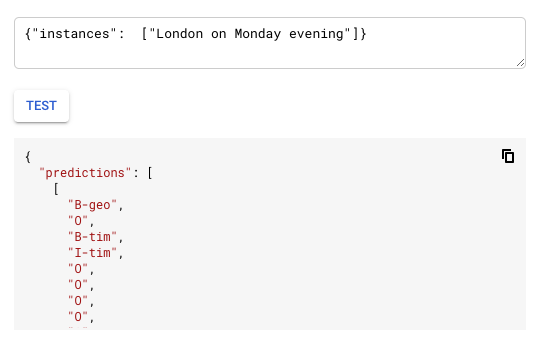mirror of https://github.com/kubeflow/examples.git
|
|
||
|---|---|---|
| .. | ||
| components | ||
| documentation | ||
| notebooks | ||
| routine | ||
| .gitignore | ||
| README.md | ||
README.md
Named Entity Recognition with Kubeflow and Keras
In this walkthrough, you will learn how to use Kubeflow to build reusable components to train your model on an kubernetes cluster and deploy it to AI platform.
Goals
- Demonstrate how to build reusable pipeline components
- Demonstrate how to use Keras only models
- Demonstrate how to train a Named Entity Recognition model on a Kubernetes cluster
- Demonstrate how to deploy a Keras model to AI Platform
- Demonstrate how to use a custom prediction routine
- Demonstrate how to use Kubeflow metrics
- Demonstrate how to use Kubeflow visualizations
What is Named Entity Recognition
Named Entity Recognition is a word classification problem, which extract data called entities from text.
